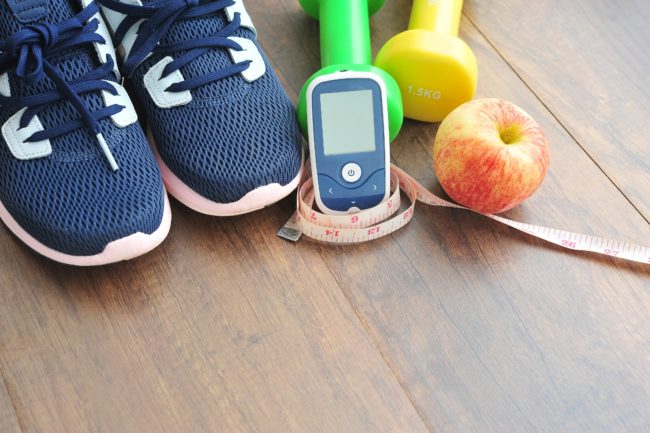November is American Diabetes Month. Sure, you’re familiar with the term “diabetes.” But do you really know what the condition is and what having it means?
There’s no better time to learn! Read on for a look at the ins and outs of diabetes.
There are two main types of diabetes — Type 1 and Type 2. Of the two, Type 2 diabetes is by far more common, representing around 95 percent of all diabetes.
You may have heard Type 1 diabetes called “juvenile diabetes.” The condition was primarily diagnosed in children years ago, hence the name. These days, though, Type 1 diabetes is diagnosed in people of all ages.
This type of diabetes occurs when the body doesn’t produce insulin, the hormone necessary to take glucose (blood sugar) from the bloodstream to the body’s cells. Because the body isn’t producing insulin, treatment for Type 1 diabetes includes insulin injections or a pump that infuses the body with insulin.
Type 2 diabetes occurs when your blood sugar levels rise higher than normal — a condition that’s also called hyperglycemia. This occurs because the body doesn’t use insulin effectively.
There are several types of treatment available for Type 2 diabetes, including lifestyle changes (such as a special diet and exercise regimen), oral medications, and insulin injections. Some people can control the condition through lifestyle habits, but many others need help to manage their glucose levels.
You can take steps to limit your risk factors for Type 2 diabetes. Researchers are still working to uncover risk factors for Type 1 diabetes, which seems to have a genetic component. However, there are multiple known risk factors for developing Type 2 diabetes.
Some risk factors can’t be changed. These include a family history of diabetes, increased age, certain ethnicities, and a history of gestational diabetes. However, you can lower your chances of developing the condition by limiting or eliminating other risk factors.
Being overweight or obese, having an unhealthy diet, being physically inactive, and having high blood pressure are all modifiable risk factors for Type 2 diabetes.
You can take steps toward better health by exercising regularly (at least 30 minutes a day on most days of the week) and eating a balanced diet filled with fruits and vegetables, whole grains, and lean proteins. These two actions will help you get to — and maintain — a healthy weight and, in many cases, maintain a normal blood pressure.
The best way to watch out for diabetes is through regular checkups. But in addition to glucose tests at your annual physical, there are also certain symptoms you should be aware of.
Common symptoms of diabetes include:
- Blurry vision
- Extreme fatigue
- Feelings of intense hunger, even while eating
- Feelings of intense thirst
- Frequent urination
- Slow-healing cuts or bruises
- Tingling or numbness in the extremities (This is a sign of Type 2 diabetes)
- Unexpected weight loss (This is a sign of Type 1 diabetes.)
If you experience any of these symptoms, talk with your doctor. He or she can help determine if diabetes is their cause.
Diabetes affects the entire body. If you have diabetes, you’re at an increased risk for many health conditions. In most cases, though, carefully managing the condition can limit those risks.
Those with diabetes are at risk of developing kidney disease because high levels of blood sugar make the kidneys filter too much blood.
Neuropathy, or nerve damage, is also common among those with diabetes. While neuropathy can occur anywhere in the body, it’s most common in the feet, leading to tingling, burning sensations, or weakness. It can also lead to a lack of feeling in the foot, meaning you can hurt your foot and be unaware.
Diabetes also increases a person’s risk of stroke and heart disease — which is even more reason why it’s important to carefully manage the condition.
Regular checkups with your doctor can help you keep an eye out for diabetes. Have you had one recently? If you need a doctor, find one here.







